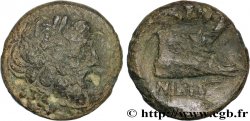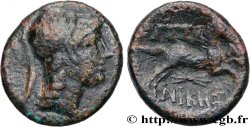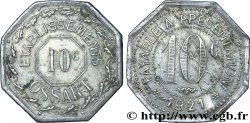bgr_296056 - MACEDONIA - PROVINCIA DE MACEDONIA - TESSALONICA Tétradrachme stéphanophore
non disponibile.
Articolo venduto sul nostro negozio (2013)
Prezzo : 280.00 €
Articolo venduto sul nostro negozio (2013)
Prezzo : 280.00 €
Tipo : Tétradrachme stéphanophore
Data: c. 80 AC.
Nome della officina / città: Thessalonique, Macédoine
Metallo : argento
Diametro : 28 mm
Asse di coniazione : 12 h.
Peso : 16,29 g.
Grado di rarità : R2
Commenti sullo stato di conservazione:
Exemplaire sur un flan ovale, un peu court sur la légende au droit. Très beau portrait idéalisé d'Alexandre de haut relief, bien venu à la frappe. Important grafitti au droit devant le visage. Frappe un peu molle au revers. Patine de collection avec des reflets dorés
N° nelle opere di riferimento :
Diritto
Descrittivo diritto : Tête idéalisée à droite d'Alexandre le Grand sous les traits du Dieu Zeus-Ammon cornu.
Legenda diritto : [MAKEDON]WN// Q
Traduzione diritto : (de Macédoine).
Rovescio
Titolatura rovescio : AESILLAS //Q.
Descrittivo rovescio : Massue verticale entre un panier et une chaise de questeur ; le tout dans une couronne d'olivier.
Traduzione rovescio : (Aesillas questeur).
Commento
Pour ce type, nous avons quatre états pour le coin de droit qui a été retravaillé (A/ 12 A, B, C et D). Notre exemplaire a été frappé avec le coin d’avers 12 dans sa quatrième phase de détérioration avec une cassure de coin qui se développe devant le menton et au-dessus du N de la fin de la légende de droit. Mêmes coins que l’exemplaire du musée archéologique de Sofia (n° 4271, 16,44 g).
For this type, we have four states for the obverse die that has been reworked (A/ 12 A, B, C and D). Our example was struck with the obverse die 12 in its fourth phase of deterioration with a die break that develops in front of the chin and above the N of the end of the obverse legend. Same dies as the example from the Archaeological Museum of Sofia (No. 4271, 16.44 g)
For this type, we have four states for the obverse die that has been reworked (A/ 12 A, B, C and D). Our example was struck with the obverse die 12 in its fourth phase of deterioration with a die break that develops in front of the chin and above the N of the end of the obverse legend. Same dies as the example from the Archaeological Museum of Sofia (No. 4271, 16.44 g)







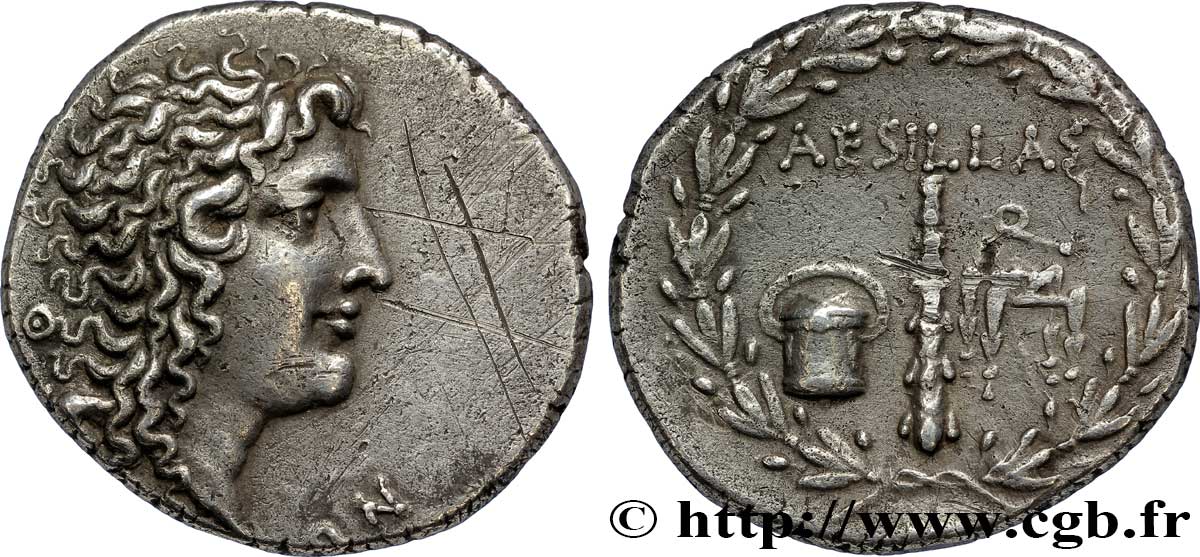
 Segnalare un errore
Segnalare un errore Stampate la pagina
Stampate la pagina Condividi mia selezione
Condividi mia selezione Fai una domanda
Fai una domanda Consegnare / vendere
Consegnare / vendere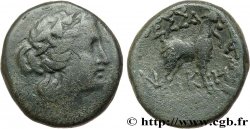
 Descrittivo
Descrittivo


